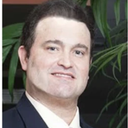Posted underCapsular Contracture Treatment q&a
Would you suggest smooth silicone or textured implants after capsular contracture revision?
I am about 4 months post op. Currently have smooth silicone unders. I will have my revision soon for CC (grade 3/4) but still cannot decide on whether to go w/textured or smooth again. I know textured is designed to prevent CC but based off research the results seem to be inconclusive, which leaves me confused on what to choose. Doc recommends textured but I am still hesitant. Help please!
Answers (9)
From board-certified doctors and trusted medical professionals
Dr. Frederic H. Corbin, MD (license restricted)
Board Certified Plastic Surgeon
Answer
More Capsular Contracture Treatment Questions
See all Capsular Contracture Treatment Q&AWE SEND PRETTY
EMAILS
What’s trending? Who’s turning heads? Which TikTok myths need busting? We’ve got you. No fluff, no gatekeeping—just real talk. Get our free, unfiltered newsletter.





